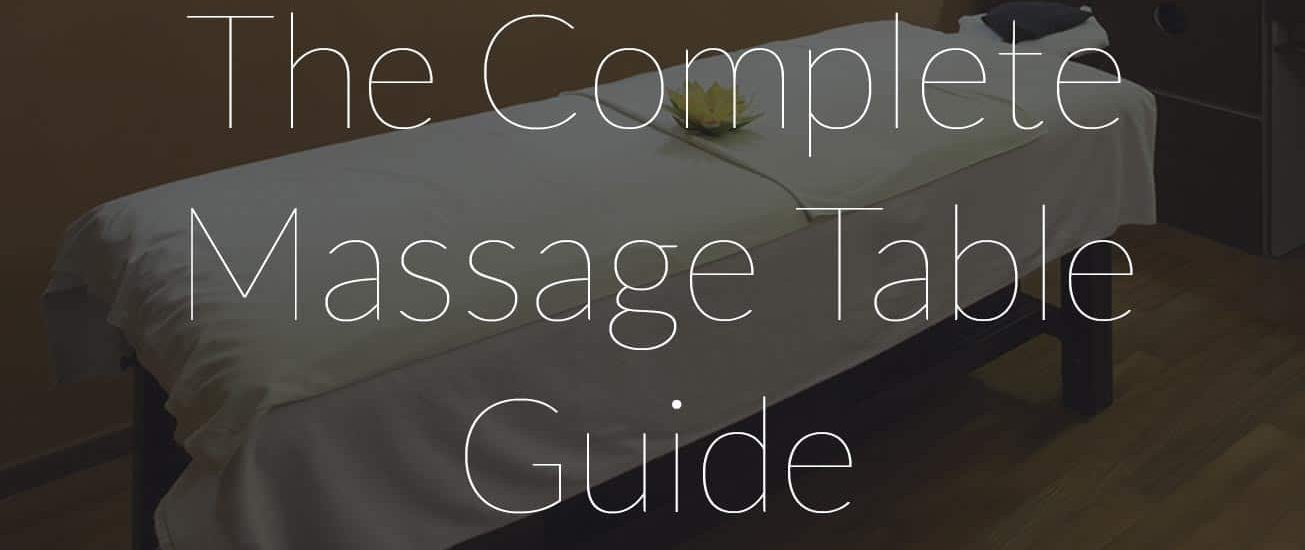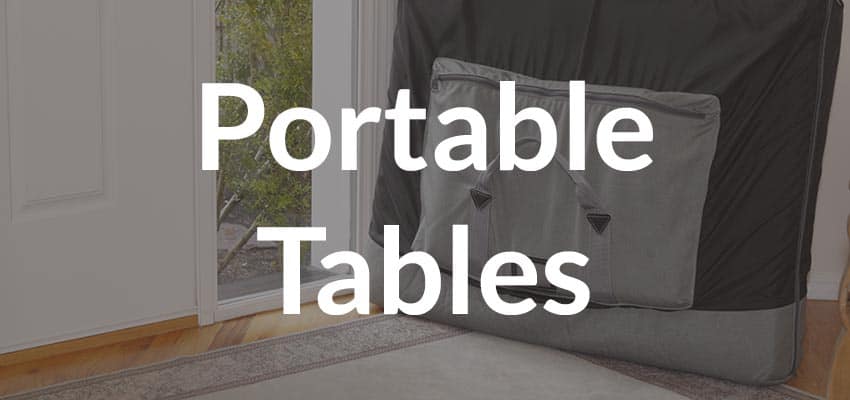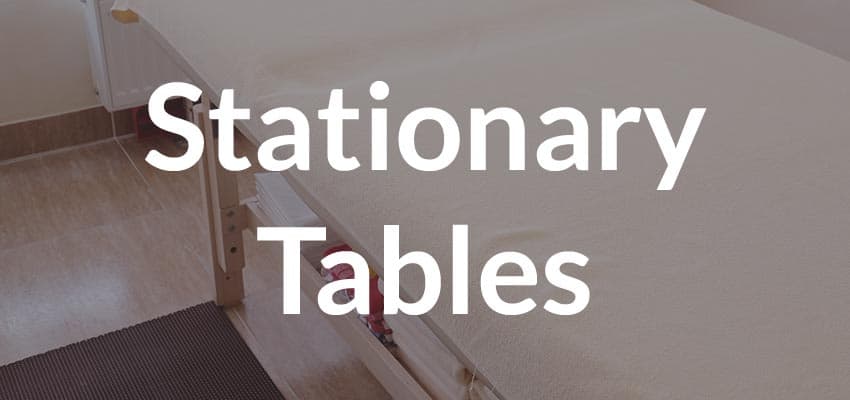How to Chose the Best Massage Table for You and Your Clients – By Ivy Hultquist 17 Comments

How to Chose the Best Massage Table for You and Your Clients
By Ivy Hultquist 17 Comments
A massage table is one of the biggest investments you will make in your massage business. This purchase is not given the thought it deserves, especially by those new to the field.
A massage table is a a tool. It affects your client’s comfort and your body mechanics, two very important things. This purchase needs thought and research.
There are a lot of choices out there and I want you to avoid the mistakes myself and others have made, as well as give you some advice on what you should look for during your search.
You need to consider your work/modality, future plans, office space, clients and budget. A table that is perfect for you is not going to be perfect for your classmate and their clients.
Let’s learn a little bit more about you, your business and your clients.
Your Future Plans
I know it is impossible for those of you starting out to know where you may be in a couple months or years, what your new clients will be like, or what your modality expertise will be.
Whatever you choose, make a good investment now and buy a table that is going to help you be more effective with your work and help you maintain excellent body mechanics.
Seasoned massage therapists frequently comment on Facebook about how they waited too long to buy a quality table that would have benefited their body and practice.
If things are kind of up in the air, buy a good portable table. If you are more settled on your location and modality, buy a good stationary or electric table.
Your Clients
What is unique about your clients?
Do they have mobility issues that will need a table that goes down low and is ADA compliant? Are they large athletes that need a wider table? Are they spa clients that get excited when half the table raises up?
Your Office
How mobile does this table need to be?
Will you be going to houses, businesses, or staying put in your office? Will you be sharing this table with other professional and need something easy to change heights, like an electric lift table?
Your Practice
What types of modalities do you use, or plan to use?
Ashiatsu will require a greater working weight and wider table, shiatsu will require shiatsu cables that allow the table to be flat on the floor, and those of your with (or planning to get) aesthetics licenses may need half your table to raise up while your client is supine.
Your Body
Are you shorter than the average person?
Pay attention to wider tables if you are shorter, it can affect your body mechanics if your table is too wide. Also, carrying a wider portable table is harder for shorter individuals.
Table Types
Now that we have an idea of you, your business and clients, we can cover the three main types of tables. I will list the pros and cons of each and other things you should consider during your search.
There are Three Main Types of Tables:
- Portable Tables
- Stationary Tables
- Lift/Hydraulic/Electric

Portable Tables
Nearly every massage therapist starts out with a portable table. They are the most affordable option and they are mobile. This is good if you do not know where you will be working, or if you are taking your table around to market your new business.
I think every massage therapist needs to own a portable table for one reason or another, but I do not believe every massage therapist should only have a portable table. I did not know what I was missing until I bought my stationary table. I wish would have made the upgrade much sooner in my career.
Pros
- Portable – Portable tables can go anywhere you go. The sky is the limit! The beach, farmer’s market, business, hotels, campgrounds and homes. They are great marketing tools.
- Lowest Weight – These are the lightest tables. If you plan to be a mobile massage therapist, you absolutely want a portable table and should pay special attention to the weight of the table and invest in a good carrying bag and cart. Tables with aluminum frames tend to be the lightest.
- Lowest Cost – Portable tables are the least expensive option. Rarely you will spend over $500 for a really good portable table.
Cons
- Noise – There are more moving parts which can make these tables can be noisier. This can be distracting in a noise sensitive environment, like a massage session.
- Middle Hinge – The middle hinge is the weakest area of the table. This where a table can collapse. Although this is rare, if you work with larger clients, pay attention to the weight limits of your table. A stationary table is a solid piece of wood, which gives the table added strength and durability.

Stationary Tables
These tables provide a professional feel and appearance. My clients instantly noticed and appreciated the added comfort and stability after upgrading from my portable table.
Pros
- One solid piece – There is no middle hinge to give out. Some tables do have a head lift hinge.
- Price – Stationary tables are in the moderate price, between portable and electric table prices.
- Storage – Often these have a have storage underneath for linens, bolsters, accessories or other supplies.
Cons
- Not Portable – They are called stationary for a reason. These tables do not fold in half and will require at least two people to move.
- Difficult to Adjust – These tables are more difficult to raise and lower than portable or electric tables. Something to keep in mind if you share an office with another therapist.

Lift/Hydraulic/Electric Tables
I firmly believe there would be many more happy therapists and clients if we massage therapists made the investment in ourselves and our practices earlier in our careers. I see the following statements all the time on forum discussions, “I waited 10 years and should have done it earlier”. Why?
Pros
- Strength – Like the stationary tables, these tables are sturdy and built to last a long time.
- Height Adjustability – This is a good benefit for offices with multiple therapists and those that practice multiple modalities.
- Many are eligible for the ADA Tax Credit.
Cons
- Cost – They cost more than portable and stationary tables, but really not THAT much more. The cost can be recouped in a few extra massages or even ADA tax credits (if the table qualifies).
- Repair Costs – If there are motor issues, expect a higher repair bill.
- Not Portable – Like stationary tables, these tables will require help to move.
Table Options
The number of options you have when choosing a table can be overwhelming. There are many options you may think you need as a new therapist, but are unlikely to actually use.
However, there are some options you should consider.
Dimensions
Length
A standard table length of 73 inches (not including your face cradle) is sufficient for nearly all massage therapists. Unless you work with a lot of very tall clients or athletes, this option is one you can skip.
Width
Most tables fall in 27-34 inch width, average is 28-30 inches. Clients will appreciate the extra inch or two on the sides of the table. The width of your table affects your body mechanics.
Shorter individuals need to be careful with carrying a wider table and body mechanics during the massage and reaching.
Height
Almost all massage tables have adjustable heights from 18-37 inches. Electric tables generally have the lowest available heights, which makes many of them ADA compliant and eligible for a 50% tax credit.
Length and width extensions are available for some tables.
Weight
If this table is going to be with you for a mobile practice or to haul from office to office, look at the weight of the table. Most portable tables are about 30 pounds (Stationary and electric tables can weigh more than a 100 pounds). If you need something lighter than this, aluminum tables are the way to go.
Foam or Padding
If a table has too much plush padding your client will sink in and this makes you work harder. If you have not enough foam, or if your foam is too dense, your client may not be comfortable.
Sports massage therapists, or those doing deep tissue massage, may want their foam denser and around 2 1/2 inches. Most other therapists will find that 3 inches foam is ideal.
Static vs Working Weight
When you purchase a table, you may see a listing for static and working weights. Persons working with larger clients and Ashiatsu practitioners should pick a table with a much higher static and working weight. Typically, stationary and lift tables have higher weight allowances and no hinges to collapse.
Static weight is the weight the table was tested with a weight drop, like a car crash test.
Working weight is the weight of your client plus the pressure and weight the therapist adds to the table during the massage.
UL Ratings will only be on tables with an electrical component. UL is an abbreviation for Underwriters Laboratories Inc., a non-profit testing organization established by Fire Underwriter’s Association.
Accessories
If you do not buy a table with a package, here are a few ideas for things you will likely need.
Bolsters
Bolsters alleviate pressure and strain on a client’s body during a massage as well as relax certain muscle groups for the therapists. Every massage therapists should have a full and half round bolster for proper positioning of the ankles and knees.
